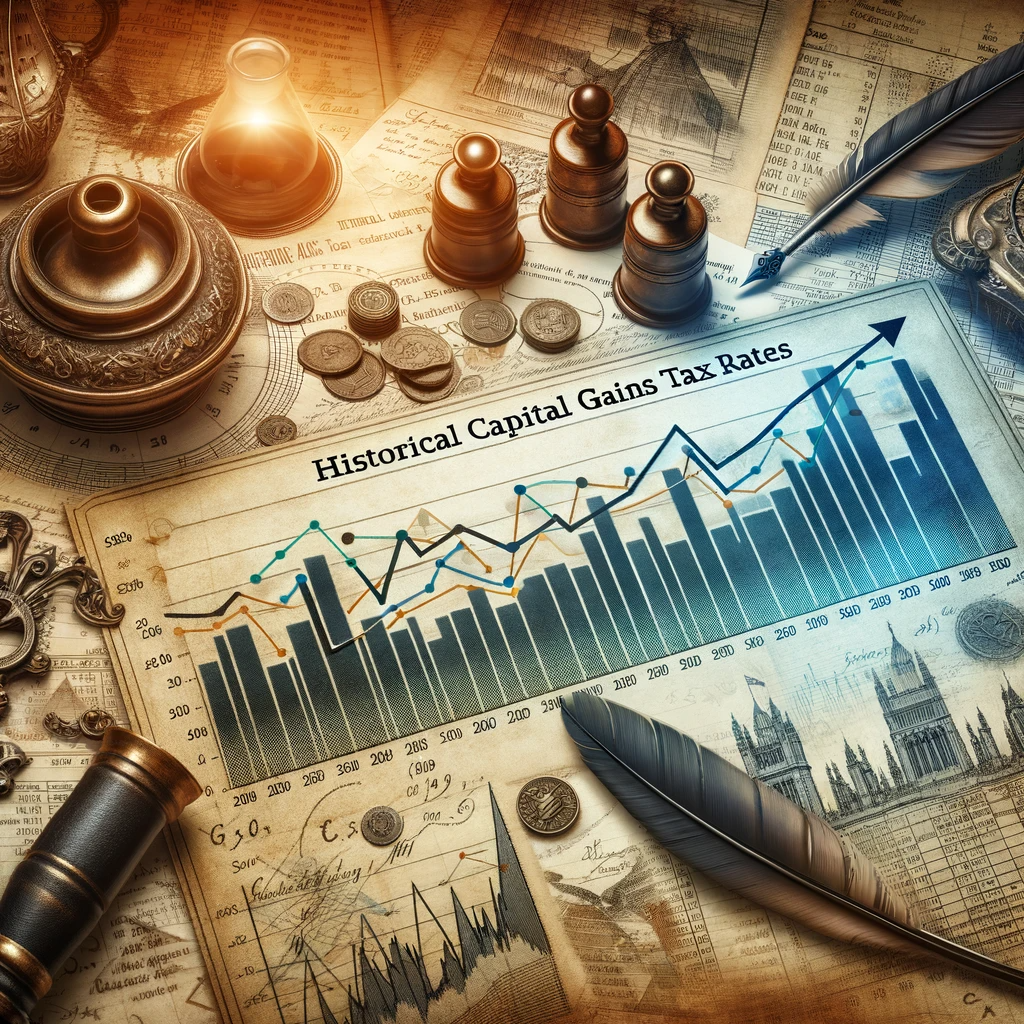In the world of finance and investments, capital gains tax (CGT) plays a pivotal role. They are especially important as you make your retirement plan. It’s a tax on the profit when you sell (or ‘dispose of’) something (an ‘asset’) that has increased in value. Understanding the historical perspective of capital gains tax rates helps investors plan their investments better and offers insights into how tax policies have evolved.
The Evolution of Capital Gains Tax Rates
Historically, capital gains tax rates have undergone numerous changes, reflecting their times’ economic and political landscapes. Broader fiscal policies and economic goals often influence these changes. For instance, a higher capital gains tax rate might be implemented to generate more revenue during economic downturns or to address income inequality. Conversely, lower rates could be introduced to encourage investment and stimulate economic growth.
Current Capital Gains Tax Rates
The current capital gains tax rates are based on the time an asset is held and the taxpayer’s income bracket. Generally, assets held for more than one year are considered long-term and subject to lower tax rates than short-term assets, which are held for one year or less.
Here’s a look at the current capital gains tax rates:
| Asset Holding Period | Tax Rate for Lower Income Bracket | Tax Rate for Middle Income Bracket | Tax Rate for Higher Income Bracket |
|---|---|---|---|
| Short-term (Less than 1 year) | Taxed at normal income tax rates | ||
| Long-term (More than 1 year) | 0% | 15% | 20% |
A Look Back: Historical Capital Gains Tax Rates
Historical capital gains tax rates provide a context for understanding how tax policies have changed. These changes can influence investment strategies and economic behavior.
| Year Range | Individual Capital Gains Tax Rate | Corporate Capital Gains Tax Rate |
|---|---|---|
| 1913–1932 | Varies, up to 12.5% | Varies, up to 12.5% |
| 1933–1952 | Varies, up to 26.0% | Varies, up to 26.0% |
| 1953–1972 | Varies, up to 35.0% | Varies, up to 35.0% |
| 1973–1992 | Varies, up to 28.0% | Varies, up to 34.0% |
| 1993–2012 | Varies, up to 20.0% | Varies, up to 35.0% |
| 2013–2023 | 20.0% | 21.0% |
Impact on Investors
The fluctuation in capital gains tax rates can significantly impact investment strategies. Investors often try to time their asset disposals based on these rates, which can lead to either capitalizing on lower rates or holding off disposals to avoid higher taxation.
In-depth Look at Historical Capital Gains Tax Rates
As we’ve explored, the journey of historical capital gains tax rates is not just a tale of numbers and percentages. It reflects the economic, political, and social shifts that have shaped financial policy over the decades. As outlined in our tables, the changes in these rates offer a fascinating glimpse into the government’s approach to taxation and investment incentives.
From the early 20th century to today, historical capital gains tax rates have oscillated in response to economic needs, war efforts, social welfare programs, and political ideologies. These fluctuations are not merely historical footnotes; they have had real implications for investors, businesses, and the overall economy. For instance, lower capital gains tax rates in specific periods have catalyzed investment and economic growth. In comparison, higher rates sometimes align with government efforts to redistribute wealth or fund public initiatives.
Understanding these historical capital gains tax rates is more than an academic exercise as we navigate the current financial landscape. It offers valuable insights for investors, financial planners, and policymakers. By examining how these rates have evolved, we can better understand the potential impacts of current and future tax policies on investment strategies and economic growth.
In conclusion, they serve as a crucial indicator of the dynamic nature of our financial system. They reflect the ever-changing balance between promoting economic growth and addressing societal needs through taxation. As we look to the future, the lessons drawn from these historical rates will continue to inform decisions and strategies in the complex world of finance.

More Resources
For further reading and a deeper understanding of capital gains tax rates and related financial concepts, explore the following resources:
- IRS – Capital Gains and Losses: The official IRS page provides the most current information on capital gains tax, including detailed guidelines and regulations.
- U.S. Securities and Exchange Commission – Investment Resources: This site offers valuable educational material for investors, helping to understand the broader implications of capital gains and investment strategies.
- Congressional Budget Office – Tax Policy Reports: Access in-depth reports and analyses on tax policies, including the fiscal impacts of capital gains taxes, from a legislative perspective.
- Tax Foundation – Historical Capital Gains Tax Data: Dive into detailed historical data and analysis of capital gains tax rates provided by a leading independent tax policy nonprofit.
- Investopedia – Capital Gains Tax Explained: A comprehensive guide to understanding capital gains tax, perfect for those seeking foundational knowledge or a quick refresher.

Leave a Reply